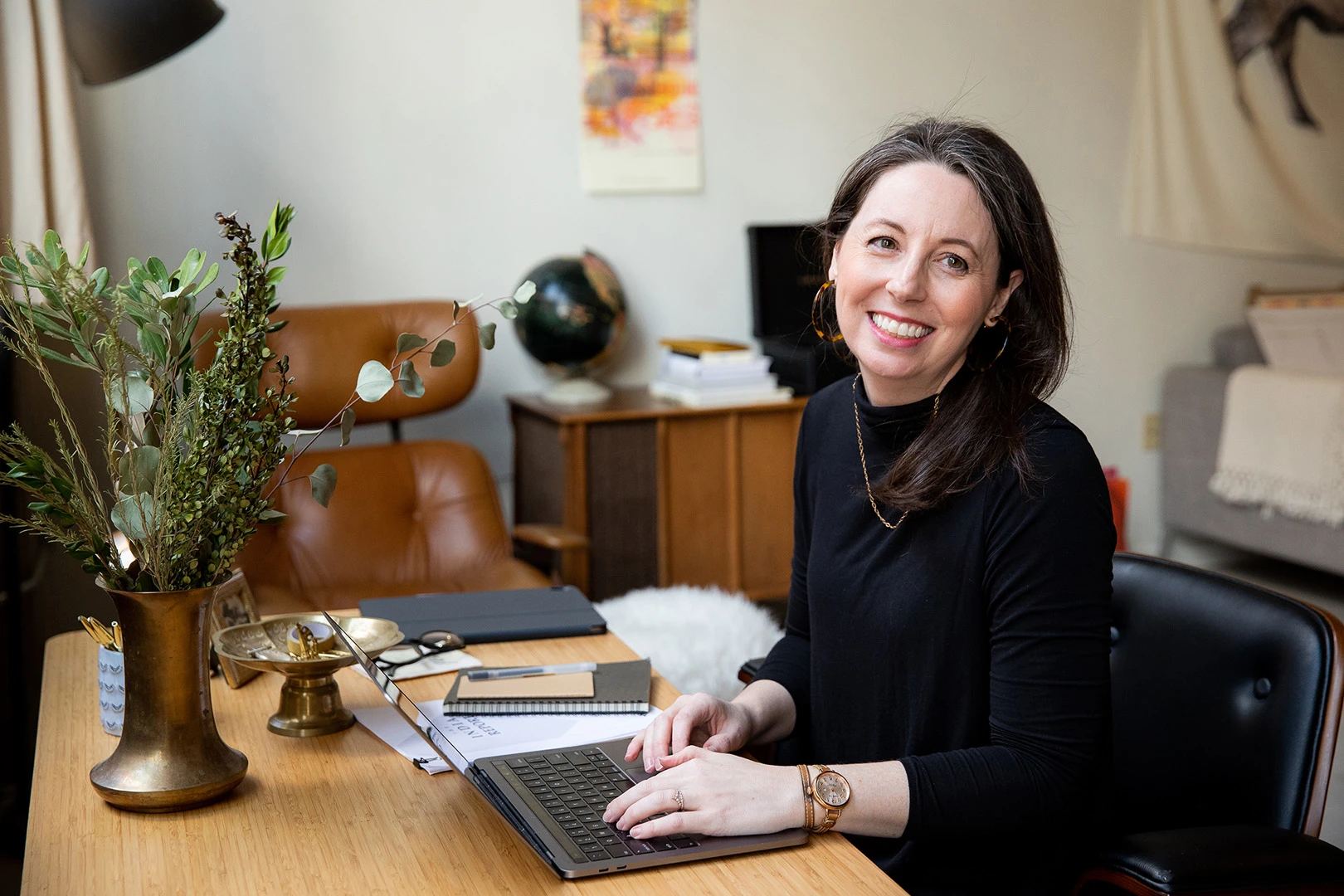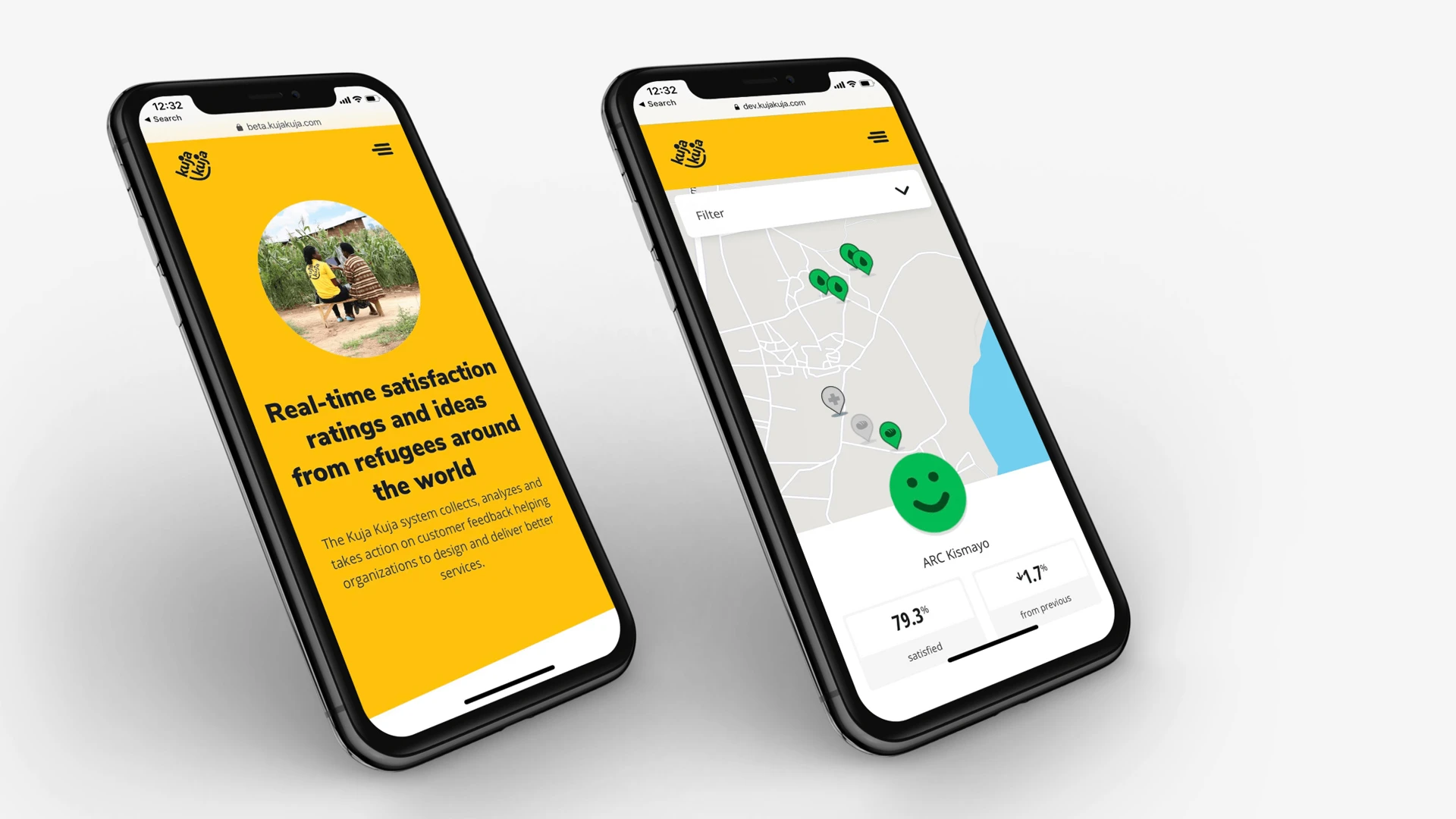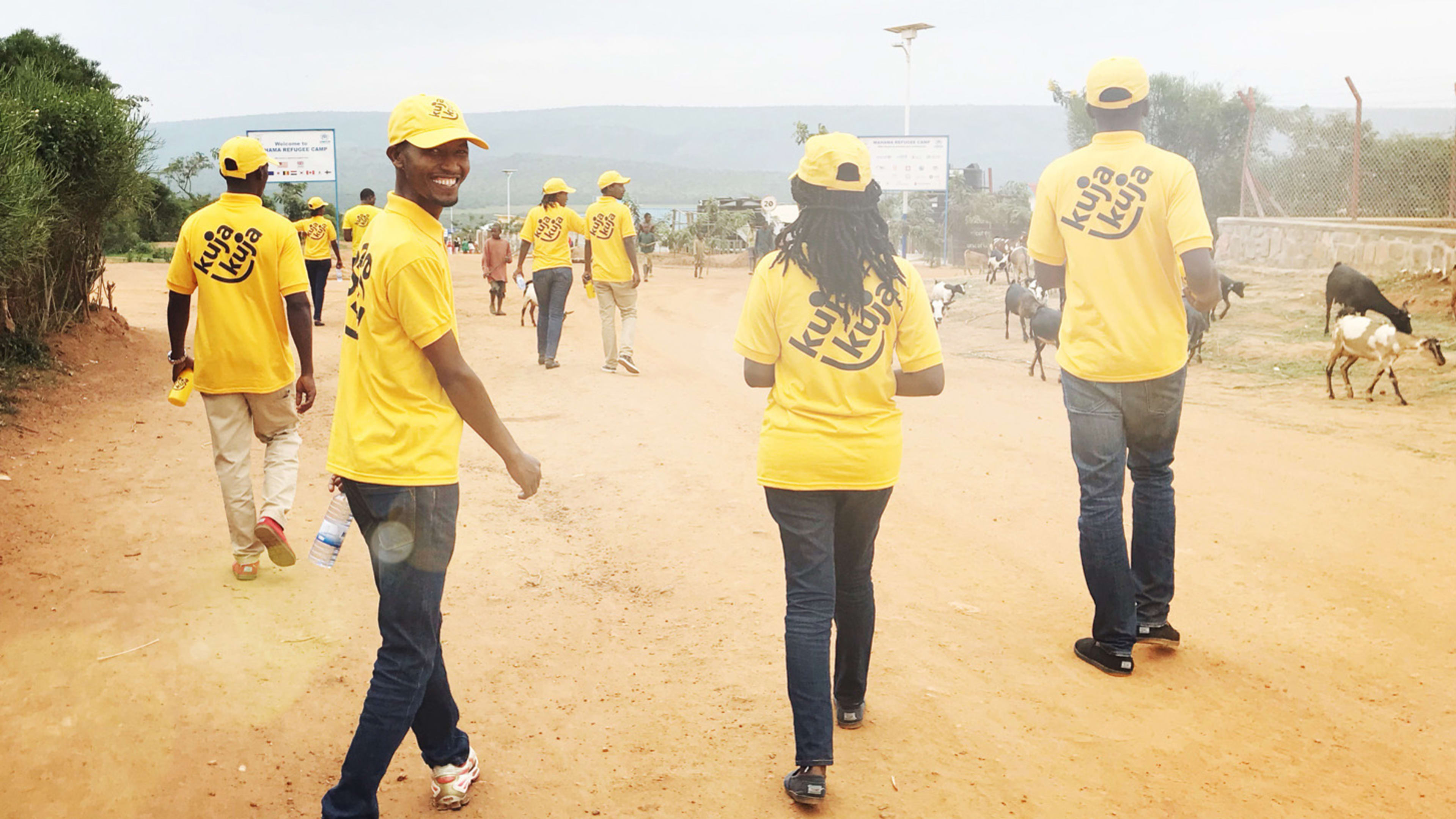Jennifer Rose is the global design director of Kuja Kuja, a platform for tracking satisfaction ratings and ideas from refugees around the world. She spoke to Doreen Lorenzo for Designing Women, a series of interviews with brilliant women in the design industry.
Doreen Lorenzo: How did you know you were going to be a designer?
Jennifer Rose: It wasn’t until I went to college at Indiana University, and the first class in the design program was a letterpress printing class. As soon as I started learning how to work the machines and the wood type and ink, that’s when I just fell in love with the design, and I knew it was for me.
DL: Tell me about the evolution of design in your life.
JR: When I was first learning the letterpress, design felt like a noun, like it was the finished piece. Now I feel like design is more of a verb, more like a process, the research and the creative leaps along the way to creating something that’s thoughtful, delightful, functional, aspirational, all while anticipating the needs of the people using it.
Soon out of college I went and worked with a woman named Sylvia Harris. She was my mentor and my design hero. She believed everyone deserved beautiful, usable design. After working with her she inspired me to go backpacking around the world. She always talked about how it really informed and influenced her work. When I returned, I started working at Ideo.org where I ran a program called Launchpad, which gave me the opportunity to create products and experiences in businesses and in complex environments around the world. That’s where the shift from focusing on design as a final, finished piece to being more of a process really served me in my career.

JR: The idea for Kuja Kuja came from the American Refugee Committee in Minneapolis. They hired our design team at Ideo to build the first working prototype and brand for this idea that they had. Soon after the project, I transferred from Ideo over to the American Refugee Committee to work on Kuja Kuja full time and to get this venture up and running.
Kuja Kuja is like the Yelp for services and refugee settlements, which doesn’t exist. At its core, it’s a really simple idea. It’s asking people in these refugee camps and settlements if they are satisfied or not with the service they’re receiving. Then we ask them for an idea to improve the service, and day after day we get these wonderful ideas that allow the teams in the camp to make changes and figure out where they want to use their resources to really deliver a good customer experience for people living in these locations.
DL: And it’s not all happy faces, right? From a designer’s perspective that’s exactly what you want. That’s really good feedback.
JR: Kuja Kuja was designed to be a technology platform, but we learned early on that in order for the technology to work, we first needed to design this customer service experience for our teams to go out and gather precious data. That’s what I focus on: the look, the feel, the function of our brand and our experience for the customer, our staff, and our clients that we’re giving this information to.

JR: The research part comes down to making genuine connections and having a genuine curiosity while being in interviews or immersed in the moments. Incorporating the design is happening simultaneously with the research. Those two parts of the process blended together much more while designing Kuja Kuja. We also rely heavily on our team of about 70 people across the three countries that we operate in to help guide us and build as we go. They co-design and collaborate on prototyping and making things on the fly.
Data is a big part of what we do. We benefit from having a greater granularity in the understanding of customers. But data can be a double-edged sword that raises the question of: How do customers feel about the personal data that’s being collected and how the products and services are being more customized? There’s the responsibility of gathering the delicate information: Where does it go? The design challenge there is then designing for trust, and designing for the customer and the company to have this trusted relationship over time.
DL: Because you’ve got so many different people and cultural differences, there’s never a right decision. How do you work through that?
JR: Especially when you’re collecting feedback, it can feel critical; it could feel personal, and it can be a very delicate conversation to have. That’s where our Kuja Kuja branding comes into play. We designed it with our team in Uganda to be a sunny, warm, welcoming brand because we wanted customers to feel like it was a safe trusted space to share their thoughts, dreams, and ideas. Human emotion can become complex, but through our design approach, we can find something that resonates with everyone.
DL: What are some of the challenges that refugees experience that maybe most people aren’t aware of?
JR: For people living in refugee camps and settlements, or for those that are internally displaced, there is a strong desire and an eagerness to have stable employment and to have the opportunity to go to school. There’s an abundance of people who are ready and eager to work, and they have brilliant ideas and skills and talents, and they’re really hoping for that opportunity to put it to good use at a job or in the classroom.
It’s largely due to the existing systems that are in place that those with refugee status may have challenges accessing work and education opportunities in the host communities and countries that they’re living in.
Our team of 70 at Kuja Kuja have refugee status, and we train our teams in those locations that we operate in. They have full-time benefits; they’re hired for hospitality; and they’re the ones who are keeping Kuja Kuja running each day.

JR: We have a culture at Kuja Kuja that’s about helping each other learn. I’m a student at the same time that I’m trying to teach. I know I’m not the loudest person in the room, nor will I ever be, so my leadership approach is that when I’m saying something, I try to show it. Whether it’s through my actions or through making visuals to show an idea, a strategy, a plan, a change or whatever it is. In order for my words to be heard, I have to take that next step and visually represent what I’m trying to communicate. It does add work to get the design voice heard, but the plus side is, I’ve already taken those thoughts and ideas to the next fidelity, and it ends up being far more powerful and effective. English might not all be our first language, and we all have different focuses that we’re working on, so actions and visuals actually end up speaking louder than words.
DL: Where does the design industry have to go? What things do you see in the coming years that that should be happening?
JR: I’d love to see companies recognize that building teams with different voices, different backgrounds, different experiences, will lead to more creative teams. With diversity comes creativity, and with creativity comes an organization that can be adaptable to the ever-changing world. My hope is that as designers, we can help companies see the value in that.
Read more about Kuja Kuja here.
Recognize your brand’s excellence by applying to this year’s Brands That Matter Awards before the early-rate deadline, May 3.
